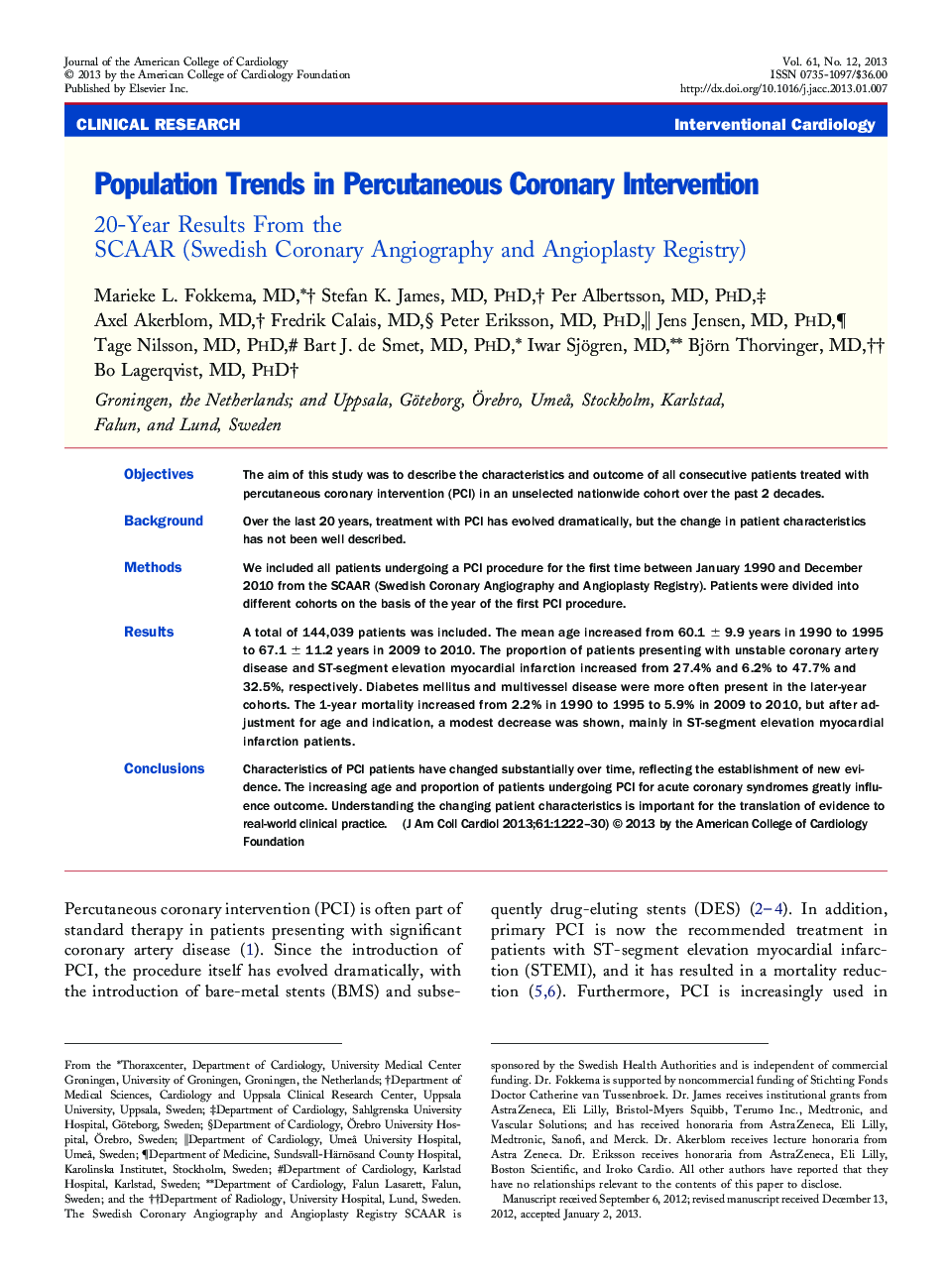| Article ID | Journal | Published Year | Pages | File Type |
|---|---|---|---|---|
| 2946349 | Journal of the American College of Cardiology | 2013 | 9 Pages |
ObjectivesThe aim of this study was to describe the characteristics and outcome of all consecutive patients treated with percutaneous coronary intervention (PCI) in an unselected nationwide cohort over the past 2 decades.BackgroundOver the last 20 years, treatment with PCI has evolved dramatically, but the change in patient characteristics has not been well described.MethodsWe included all patients undergoing a PCI procedure for the first time between January 1990 and December 2010 from the SCAAR (Swedish Coronary Angiography and Angioplasty Registry). Patients were divided into different cohorts on the basis of the year of the first PCI procedure.ResultsA total of 144,039 patients was included. The mean age increased from 60.1 ± 9.9 years in 1990 to 1995 to 67.1 ± 11.2 years in 2009 to 2010. The proportion of patients presenting with unstable coronary artery disease and ST-segment elevation myocardial infarction increased from 27.4% and 6.2% to 47.7% and 32.5%, respectively. Diabetes mellitus and multivessel disease were more often present in the later-year cohorts. The 1-year mortality increased from 2.2% in 1990 to 1995 to 5.9% in 2009 to 2010, but after adjustment for age and indication, a modest decrease was shown, mainly in ST-segment elevation myocardial infarction patients.ConclusionsCharacteristics of PCI patients have changed substantially over time, reflecting the establishment of new evidence. The increasing age and proportion of patients undergoing PCI for acute coronary syndromes greatly influence outcome. Understanding the changing patient characteristics is important for the translation of evidence to real-world clinical practice.
